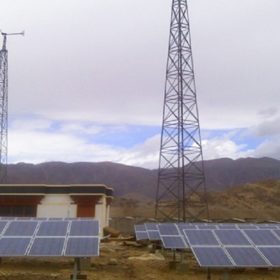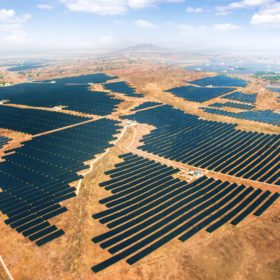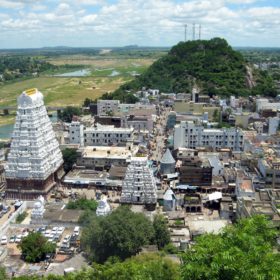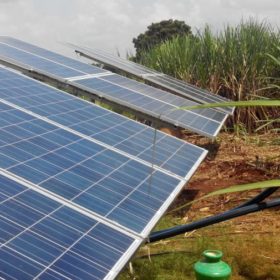EESL, Goa government sign pact on 100 MW decentralized solar
Through its newly formed subsidiary Convergence Energy Services Limited (Convergence), the Energy Efficiency Services Limited will implement ground-mounted solar power plants—in sizes of 500 kW to 2 MW—on vacant/unused land provided by the Gram Panchayats or electricity board in the state.
Ministry drafts policy for rural solar appliance roll-out
The Ministry of New and Renewable Energy is eager to ramp up deployment of solar-powered dryers, cold storage and charkhas across the nation’s 600,000 villages.
MNRE invites EoI for installation of innovative solar pumps
The innovators will be required to showcase their technologies in real field conditions. The shortlisted ones will be empanelled and allocated sites to install solar pumps under the Pradhan Mantri Kisan Urja Suraksha evem Utthan Mahabhiyan (PM KUSUM) Scheme.
Rajasthan could add 22.6 GW of new renewable energy capacity to the grid within a decade
The state—which has already installed an aggregate 9.6 GW of renewable energy capacity as of FY 2019-20 end—will add another 22.6 GW to the grid by the end of FY2029-30. Of the new RE addition, 18 GW will come from solar capacity.
CSIR-CMERI Durgapur, NISE sign pact on solar research and capacity building
The CSIR-Central Mechanical Engineering Research Institute (CMERI), Durgapur, which has expertise in the design and development of solar artifacts for multifaceted uses, and the National Institute of Solar Energy (NISE), Gurugram, will conduct joint field studies for different solar technologies and work towards skill and capacity building.
CEL tenders distributed solar on farmland in Rajasthan
Central Electronics Limited has invited bids to install distributed, grid-connected PV systems for solarization of existing agriculture pumps in Tonk district. Bidding closes on September 19.
India’s solar future: Domestic first, international second
The International Solar Alliance signals India’s hope to be a global competitor in emerging technologies and cement its place as an institution builder. But how does India’s vision translate into domestic policy? Has India led by example?
Andhra Pradesh allocates 57% of energy budget to ‘free power for agriculture’ scheme
The overall energy outlay of Rs 6984.73 crore for the year 2020-21 is much lower than 2019-20’s revised estimate of Rs 11,639 crore.
Another bidding extension for off-grid solar pumping systems in Madhya Pradesh
Bidders now have until June 26 to bid for installation and commissioning of standalone off-grid solar water pumping systems in the State of Madhya Pradesh.
Mobile solar pumping system offers pay-as-you-go solution for farmers
Researchers have simulated a cart-mounted solar pump which they say would mean farmers in off-grid areas would be able to irrigate fields by paying only for the solar electricity used.














